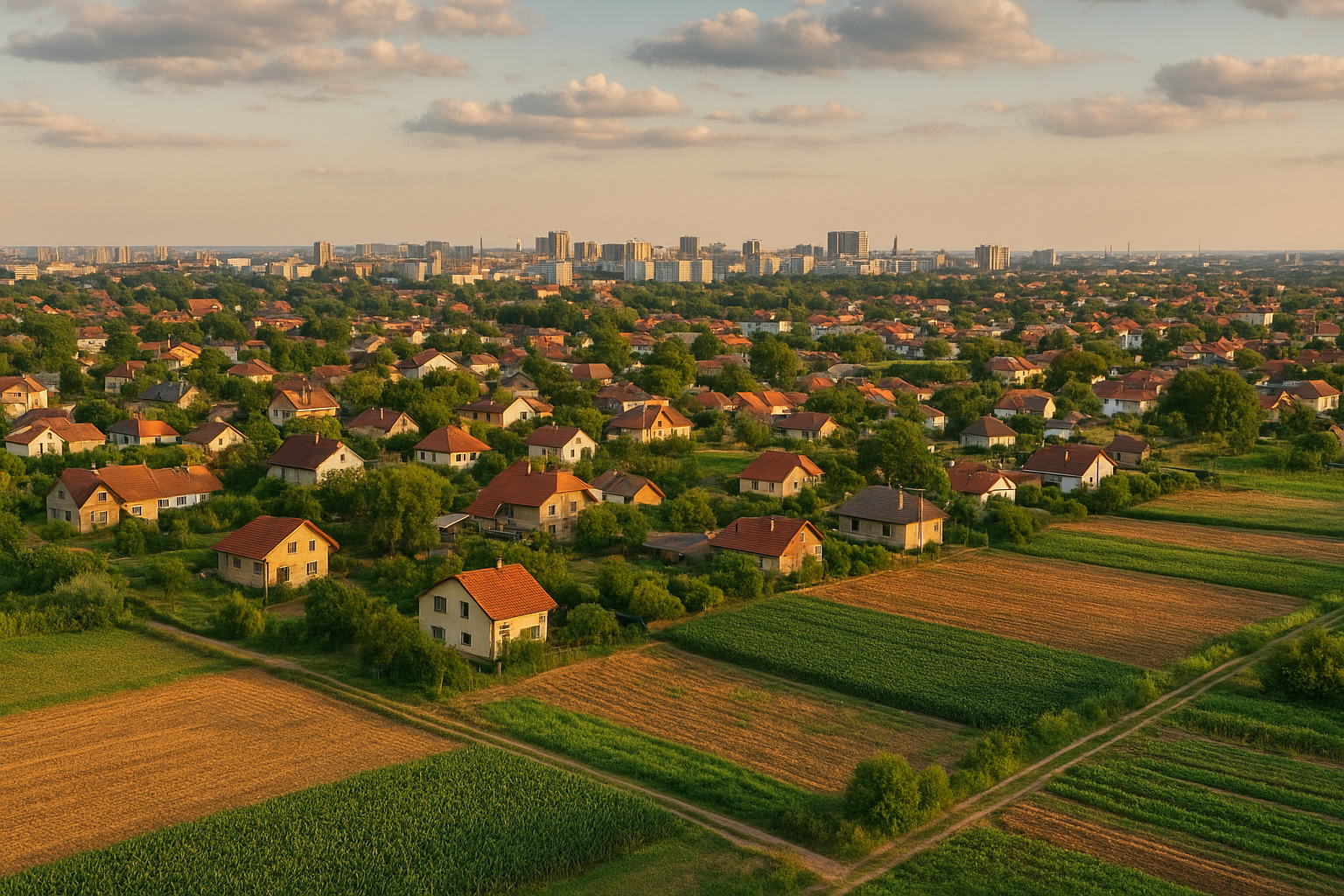Africa is urbanizing at an unprecedented pace, with 43-45% of its population now living in urban areas and an annual GDP growth of only 3.5-4%. This mismatch between economic expansion and urban cost pressures risks creating a “consumption squeeze,” where city dwellers struggle to afford basic necessities. Instead of pursuing a traditional urbanization path dominated by mega-cities, African governments could redirect efforts toward peri-urban cities and smart villages. These alternative settlement models, anchored in decentralized energy and robust transport infrastructure, can make Africans smarter consumers and build resource sufficiency across the continent.
The Urbanization Challenge
Current trends show African cities becoming more populated due to both rural-to-urban migration and the reclassification of surrounding rural areas. This has increased the cost of living in cities, where housing, food, and utilities outpace income growth. With GDP per capita averaging only US$1,516 in Sub-Saharan Africa, many households face mounting financial strain.
The traditional model of urbanization, concentrated mega-cities absorbing ever more villages risks producing unsolvable urban crises with sprawling slums, rising food insecurity, congested infrastructure, and fragile consumer demand. The danger is clear: Africa could experience growth without prosperity, and urbanization without empowerment.
Peri-Urban Cities and Smart Villages as a Hybrid Solution
Peri-urban cities and smart villages combine the affordability of rural areas with the infrastructure and services of urban settlements. With decentralized energy systems, stronger transport networks, and digital connectivity, these hubs can reduce living costs and empower consumers.
But infrastructure alone cannot secure this future. Without safety and judicial systems, these communities risk becoming breeding grounds for informal gangs, land conflicts, and criminal networks. Thus, a reliable security architecture is indispensable and must be built into the design of peri-urban ecosystems.
Security and Justice: The Critical Pillar
A sustainable peri-urban or smart village model requires three complementary foundations: infrastructure, governance, and justice.
- Community Policing and Preventive Security: Small-scale but well-trained local security units can maintain order, prevent land disputes, and reduce migration-driven crime waves.
- Accessible Judicial Systems: Mobile courts, community mediators, and digital dispute-resolution platforms can handle civil conflicts quickly and fairly, preventing escalation into violence.
- Integration with National Security: Peri-urban hubs to link with national police, intelligence, and defense systems to prevent infiltration by organized crime or extremist groups.
- Land Tenure Security: Clear legal frameworks and enforceable property rights reduce the risk of land grabs and conflicts, fostering investor and household confidence.
Smart Consumers, Resource Sufficiency
This model creates smarter African consumers by:
- Keeping costs manageable: Housing and food remain affordable, reducing vulnerability to urban inflation.
- Encouraging rational consumption: With lower fixed costs, households can allocate more income toward education, healthcare, and productive assets.
- Fostering resource sufficiency: Villages can sustain partial self-production of food and energy while still accessing wider markets. This hybrid model reduces dependency on overstretched city systems.
- Promoting adaptive demand: Consumers in peri-urban hubs become accustomed to innovative, low-cost goods and services, sachet packaging, pay-as-you-go solar, shared transport that reinforce financial resilience.
Rather than drawing all resources and populations into megacities, governments can invest in smaller, semi-urbanized clusters with targeted infrastructure. These clusters maintain the affordability and resource base of rural areas while integrating key urban services such as electricity, connectivity, healthcare, and education.
Africa does not need to repeat the mistakes of over-concentrated industrial urbanization seen in Asia and Latin America. By embracing peri-urban cities and smart villages, African governments can reduce the risks of a consumption crisis, empower citizens as smart, adaptive consumers, and build pathways to resource sufficiency.
This alternative urban vision is not just about housing people; it is about creating environments where Africans can live affordably, consume intelligently, and thrive sustainably.

